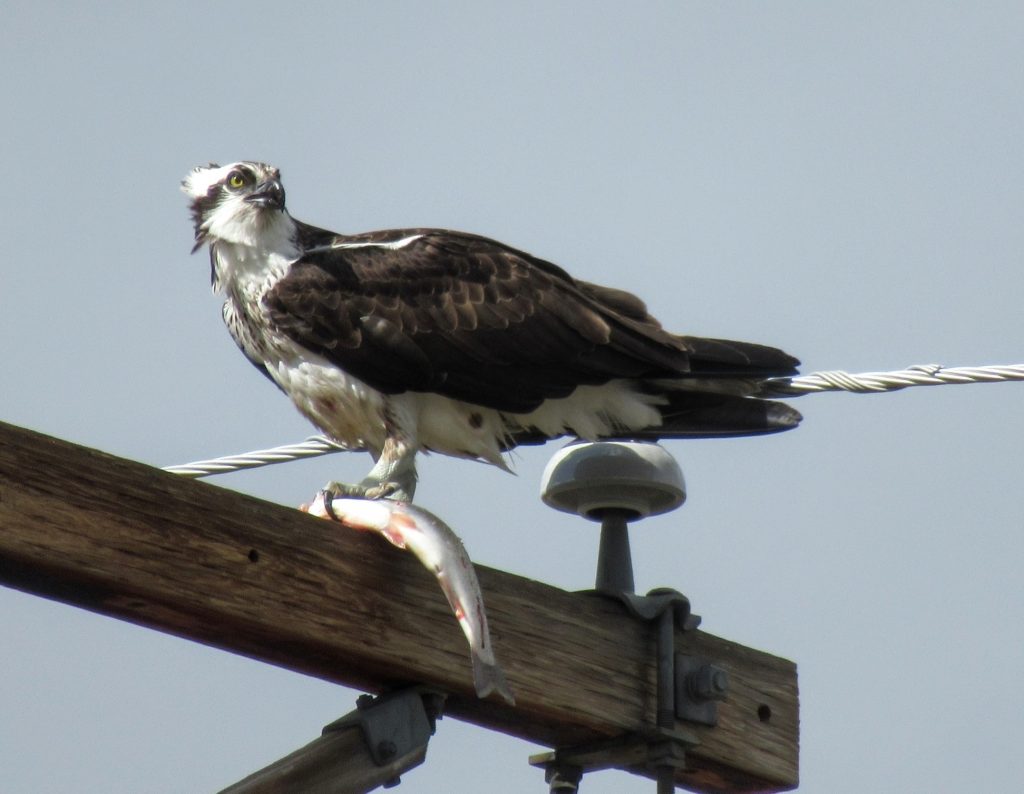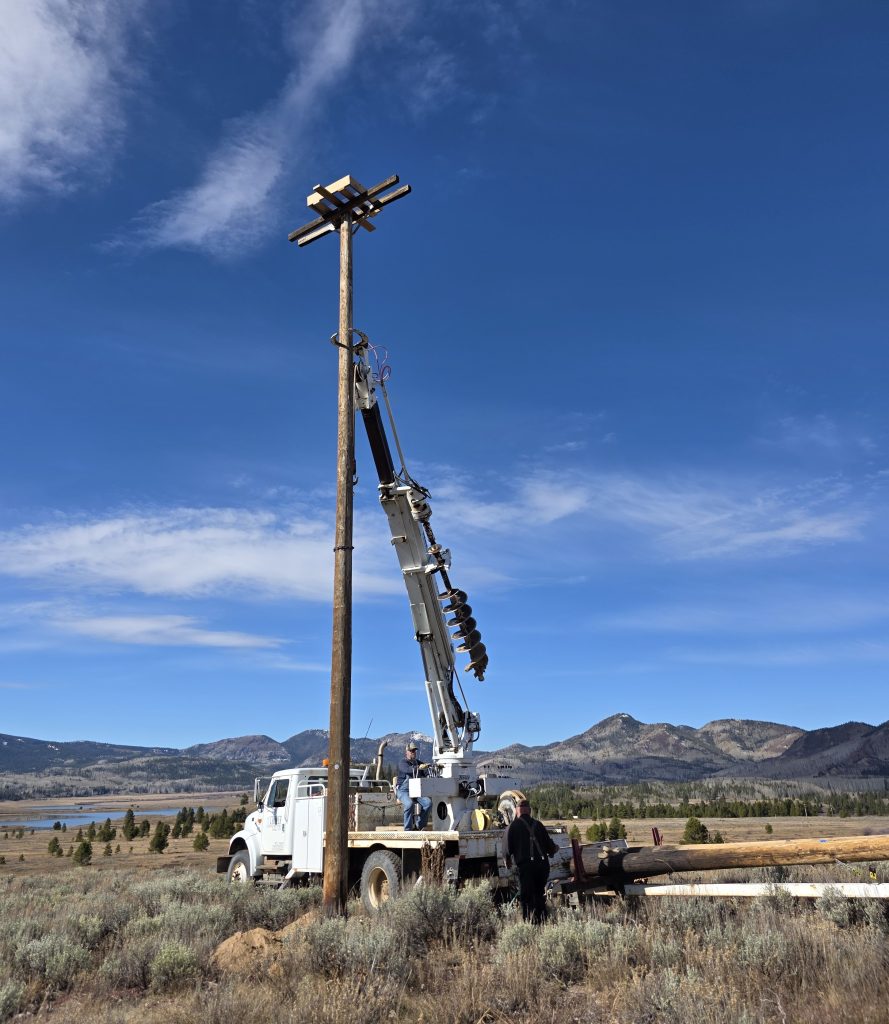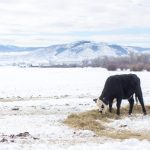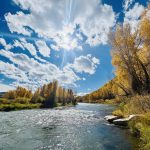State park nesting platforms added to encourage additional raptors
Existing platform at Steamboat Lake led to 3 osprey chicks

Julie Arington/Courtesy photo
With the success of an existing nesting platform that led to three osprey chicks being born in the past five years, Colorado Parks and Wildlife added three more raptor nesting platforms this fall at Steamboat and Pearl lakes through a cooperative community effort.
Julie Arington, manager at Steamboat Lake and Pearl Lake State Parks, said CPW aims to continue to encourage nesting success for raptors, so two more nesting poles were added at Steamboat Lake and a first pole at Pearl Lake.
“The platforms were added to maximize the possibility that raptors, especially osprey, will have the opportunity to raise young at the two state parks,” Arington said. “There is an existing platform at Placer Cove at Steamboat Lake where osprey have successfully raised chicks for a few years.”
CPW Wildlife Biologist Donovan Spaulding, the biological monitoring coordinator for state parks, said artificial raptor nesting poles are more common on the Front Range but are being added in other state parks to help raptor populations recover. The biologist who works in resource stewardship said nesting poles that successfully attract osprey or red-tailed hawks provide an indication of a healthy surrounding ecosystem and an ample fish population.
The historical decline in osprey populations was a result of the use of pesticides, such as DDT, which caused osprey eggshells to thin and thus crack easily during incubation, Spaulding explained. Banning the pesticide helped reverse the trend, and the installation of man-made platforms also helped with osprey recovery due to the increased availability of nest sites.
“Another benefit of nest platforms is that they create alternative nesting sites that are not located on power poles near power lines, which pose a threat due to electrocution of the nesting ospreys,” Spaulding said. “We like to provide artificial platforms for them to provide ample opportunity for nesting, and we select areas of the park that are well-suited for that.”

The biologist encouraged raptor enthusiasts to bring a spotting scope, good binoculars or a camera with a long lens when watching for raptors next year as officials recommend citizens stay some 1,300 feet away from occupied nesting platforms. The tall poles also are equipped with metal guards to keep scavenging raccoons from climbing up and disturbing a nest, he said.
The general osprey nesting season in Colorado runs from April to September, and historically, CPW has seen ospreys building and incubating on nest platforms at the higher elevation at Steamboat Lake starting in May. The three new nest platforms were added near the dam and at Sage Flats on the southeast side of Steamboat Lake as well as on the northwest side of Pearl Lake.
Osprey prefer tall, dead trees near water to nest, Arington said. The placement of the platforms was determined to minimize the chances of competition between the different nesting sites and with a bald eagle nesting site in a dead conifer tree at Mill Creek on the southwest side of Steamboat Lake.
The project this fall was a cooperative effort. Volunteer David Moulton built the nest platforms with tools and materials provided by Steamboat Lake State Park. Yampa Valley Electric Association provided retired power poles for use for the platforms. John Cromer with Cromer Contracting in Craig volunteered equipment and time to transport the poles, attach the platforms and plant the poles in the designated locations.
In Routt County, CPW also has installed two nest platforms at Stagecoach State Park and one platform at Yampa River State Park. Overall, the CPW State Park Raptor Monitoring Program includes a database of 1,048 raptor nests located across the state park system that utilizes community science volunteers to help with annual monitoring. Information on the volunteer program is available at CPWconnect.state.co.us/Adopt/RaptorMonitoring.
The CPW Stewardship Program provides resources and expertise for natural resource management within the state parks and coordinates the raptor monitoring program.
In addition to providing outdoor recreation for human visitors, CPW state parks function as the “primary agency focused on protecting and caring for some of our most valued and valuable natural resources,” Arington said.
“Number one in CPW’s Strategic Plan goals is to conserve wildlife habitat to ensure healthy sustainable populations and ecosystems,” Arington said. “Within Steamboat Lake’s management plan and stewardship plan, we’ve identified opportunities to improve wildlife habitat by providing opportunities for wildlife to reproduce, including adding man-made structures.”

To reach Suzie Romig, call 970-871-4205 or email sromig@SteamboatPilot.com.

Support Local Journalism

Support Local Journalism
Readers around Steamboat and Routt County make the Steamboat Pilot & Today’s work possible. Your financial contribution supports our efforts to deliver quality, locally relevant journalism.
Now more than ever, your support is critical to help us keep our community informed about the evolving coronavirus pandemic and the impact it is having locally. Every contribution, however large or small, will make a difference.
Each donation will be used exclusively for the development and creation of increased news coverage.









